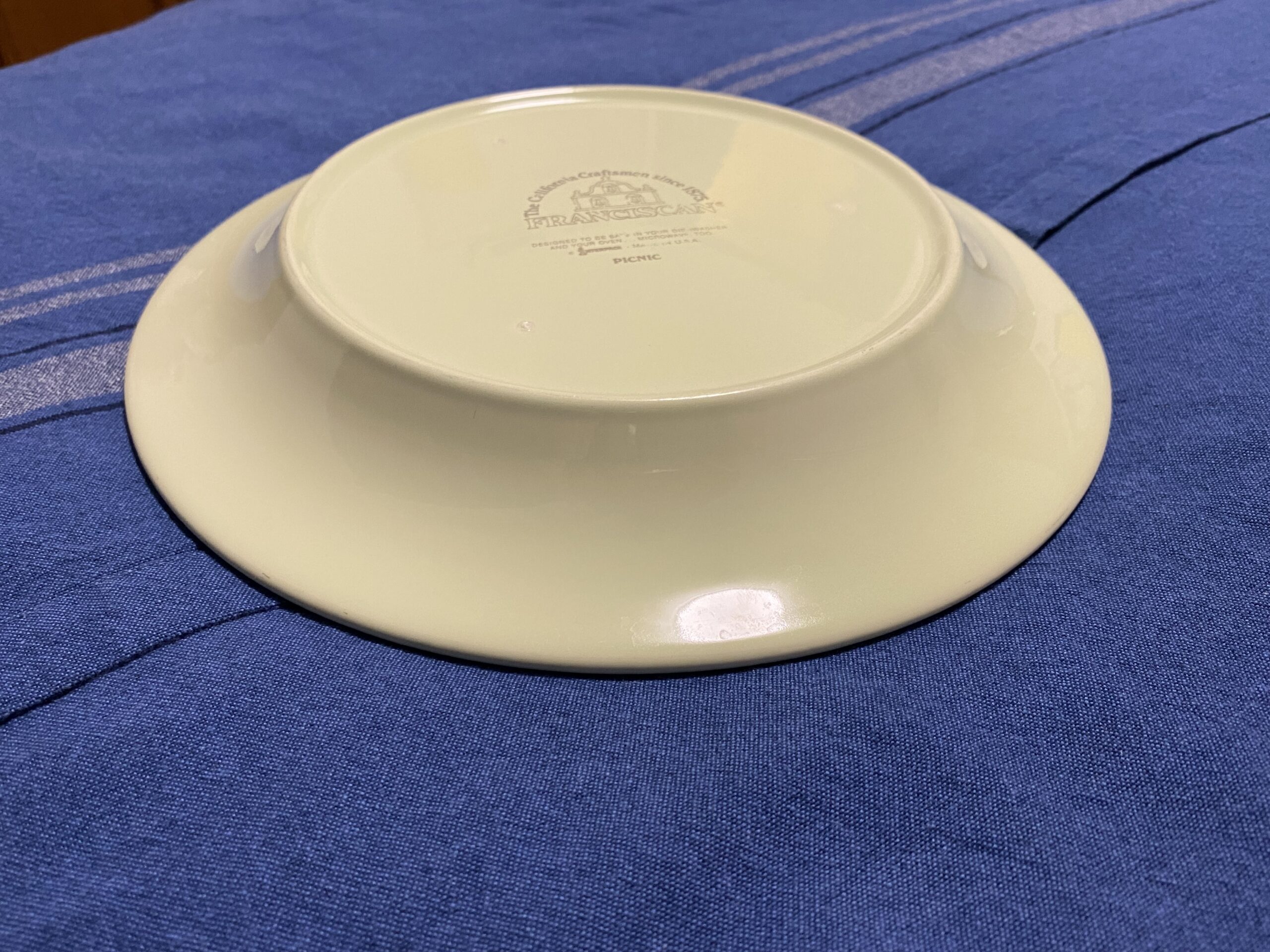Tested for a Lead Safe Mama Instagram follower, Franciscan “Picnic” pattern dish, Made in USA: 108,300 ppm Lead on surface (not safe for use with food)
For those new to this website:
Tamara Rubin is a multiple-Federal-award-winning independent advocate for childhood Lead-poisoning prevention and consumer goods safety, and a documentary filmmaker. She is also a mother of Lead-poisoned children (two of her sons were acutely Lead-poisoned in 2005). Since 2009, Tamara has been using XRF technology (a scientific method used by the U.S. Consumer Product Safety Commission) to test consumer goods for toxicants (specifically heavy metals — including Lead, Cadmium, Mercury, Antimony, and Arsenic). All test results reported on this website are science-based, accurate, and replicable. Items are tested multiple times to confirm the test results for each component tested. Tamara’s work was featured in Consumer Reports Magazine in February of 2023 (March 2023 print edition).
May 1, 2023 — Monday
XRF Test Results for the Dish Pictured
Quick Summary:
This dish, like all Franciscan dishes, has an extremely high level of Lead in the surface glaze. Franciscan dishes should never be used for food and are normally highly likely to be a source of poisoning for the user (child or adult). If you are using (or have used) any Franciscan dishes (from the U.S. or England, made in any year, decade, or century), please stop using them immediately and consider getting a Blood Lead Level test to determine if you may have any impacts. Longer-term (past) impacts may be more likely to be detected via hair or urine sampling. Ask your doctor about these types of testing methodologies. Click here to learn more about Blood Lead Testing. Click here to learn more about urine and hair testing for heavy metals.
Some additional reading:
- To read more about the concern for Lead in pottery and china, click here.
- For the menu of this website (where you can look through different categories of items Lead Safe Mama, LLC has tested), click here.
- To see XRF test results for more “Made in U.S.A.” pieces we have tested, click here.
- To see more Franciscan pieces we have tested, click here.
- For more about sending in an item from your home for Lead Safe Mama, LLC to test, click here.
Color-Code Key to XRF Readings Below
Metals noted in RED are considered toxic heavy metals in most applications.
Metals noted in ORANGE are considered toxic in some applications (specifically with ingestion).
Metals noted in BLUE are not considered toxic in this application.
Metals noted in GRAY were not found to be present (with the low threshold of detection for the XRF instrument normally falling in the single or double-digit ppm for most metals).
Reading for Center of the Food Surface on Dish
60-second test (repeated multiple times to confirm results)
- Lead (Pb): 108,300 +/- 4,000 ppm
- Cadmium (Cd): non-detect
- Tin (Sn): non-detect
- Mercury (Hg): non-detect
- Selenium (Se): non-detect
- Barium (Ba): 1,449 +/- 151 ppm
- Chromium (Cr): non-detect
- Antimony (Sb): 1,195 +/- 93 ppm
- Copper (Cu): 179 +/- 54 ppm
- Zinc (Zn): 13,100 +/- 500 ppm
- Titanium (Ti): non-detect
- Manganese (Mn): non-detect
- Zirconium (Zr): 14,900 +/- 800 ppm
- Indium (In): non-detect
- Iron (Fe): 985 +/- 205 ppm
- Bismuth (Bi): 529 +/- 137 ppm
- Vanadium (V): non-detect
- Platinum (Pt): 720 +/- 236 ppm
- Gold (Au): non-detect
- Cobalt (Co): non-detect
- No other metals were detected in consumer goods mode.
~ End ~




Never Miss an Important Article Again!
Join our Email List














